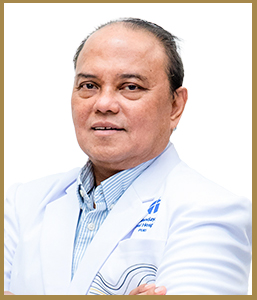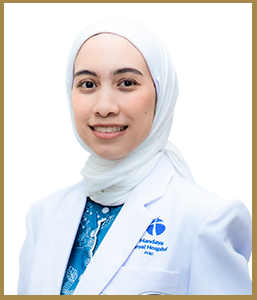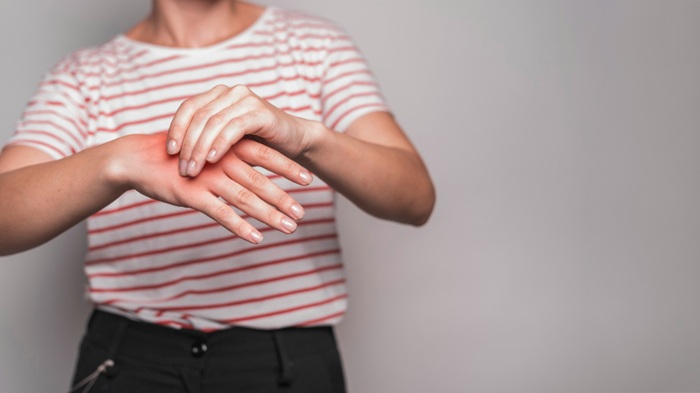Burns are injuries to the tissue caused by heat sources such as excessive sun exposure, hot liquids, fire, chemicals, electricity, or steam. This type of injury can be mild or severe enough to be life-threatening.
The treatment of burns depends on the location and severity of the injury. Burns from excessive sun exposure and minor burns are often manageable with first aid. However, deep or extensive burns, or those caused by chemicals and electricity, require immediate medical attention.
Contents
Burn Degrees
The symptoms of burns vary depending on the degree. Severe burn symptoms usually appear within 1–2 days.
Here are the burn degrees that are important to understand:
-
First-Degree (Superficial Burns)
Mild burns that only affect the outer layer of the skin (epidermis). At this degree, burns usually cause pain and redness or other changes in skin color.
-
Second-Degree (Partial-Thickness Burns)
These burns affect the epidermis and the second layer of the skin (dermis). At this level, burns cause swelling and red, white, or blotchy skin. Blisters may also appear, and the pain can be intense. Deep second-degree burns can cause scarring.
-
Third-Degree (Full-Thickness Burns)
This type of burn involves all layers of the skin and sometimes the fat and muscle tissues underneath. The burned area may appear black, brown, or white. The skin may look leathery. In third-degree burns, nerves can be damaged, so pain may be minimal or absent.
Causes and Risk Factors for Burns
Burns can be caused by:
- Fire
- Hot liquids or steam
- Hot metal, glass, or other objects
- Electrical currents
- Non-solar radiation such as X-rays
- Sunlight or other sources of ultraviolet radiation, like tanning beds
- Chemicals such as acids, alkalis, paint thinners, or gasoline
Meanwhile, burn risk factors include:
- Workplace hazards: People who work outdoors or with fire, chemicals, and other burn-causing substances have a higher risk.
- Dementia: Elderly individuals with dementia are at higher risk of burns from sources like excessively hot tap water, hot drinks, and cooking oil.
- Young age: Small children may not be able to avoid heat or fire sources. Their burns often come from the kitchen or bathroom areas.
- Alcohol: The risk of burns increases in individuals who consume alcohol or use substances that impair judgment.
Burn Complications
Burns can lead to a wide range of complications, from mild to life-threatening, including:
- Infection: Damaged skin cannot prevent germs from entering, making burns prone to infection.
- Scars: Deeper burns may not heal easily and may form scar tissue instead of regenerating normal skin.
- Swelling (edema): People with burns often experience swelling (different from blisters). Severe burns can cause swelling even in body parts far from the burn site.
More serious complications may occur if the burn is deeper and covers a larger body surface, such as:
- Dehydration and shock due to fluid and blood loss
- Compartment syndrome from swelling that cuts off blood circulation
- Breathing difficulties due to damage or complications from the burn
- Hypothermia because damaged skin affects how the body regulates temperature
- Organ damage and failure as the kidneys and liver try to filter damaged tissue from the blood
- Digestive and metabolic issues due to burns or other complications
- Sepsis, a severe and life-threatening immune response to widespread infection
- Blood clots leading to deep vein thrombosis
Burn Treatment
Treating burns depends on the depth and extent of the injury. Below are things you should and should not do when treating burns:
Recommended Actions:
- Stop or remove the source of the burn immediately (such as removing clothing soaked in hot liquid to limit burn severity).
- Pour cool water over the burn (except for certain chemical burns).
- Keep the burn area clean and protected if possible.
- Seek medical care for second-degree burns larger than the size of your hand, or for third-degree burns.
- Actions to Avoid:
- Do not use home remedies such as bleach or butter on any burn.
- Do not apply ointments or creams to second- or third-degree burns.
- Do not use ice on burns (this may worsen the injury).
- Do not pop burn blisters (this increases the risk of infection).
For severe burns, patients require immediate medical care from a doctor, such as:
- Pain management: This ranges from over-the-counter or prescription medications to treatments like nerve blocks.
- Debridement: Removing debris and dead or dying tissue.
- Dressings/protection: Bandages protect the burn from debris, germs, and other threats.
- Surgery: Helps wounds heal and minimizes scarring.
- Skin grafting: Using pre-set skin grafts to speed up healing.
- Wound care: Special treatment may be needed for optimal burn healing. This may include debridement, hyperbaric oxygen therapy, dressing management, and more.
- Therapy: Physical and occupational therapy can help patients recover from serious physical injuries caused by burns.
- Mental health care: This helps with anxiety, depression, or post-traumatic stress disorder (PTSD) related to the injury.
Recommended Doctors Specializing in Burn Treatment
Mandaya Royal Hospital Puri has a team of plastic surgeons experienced in treating burns, including:
1. dr. Poengki Dwi Pierwantoro, Sp.B.P.R.E., MM

dr. Poengki Dwi Poerwantoro, Sp.B.P.R.E., MM is a reconstructive and aesthetic plastic surgery specialist with experience in treating various burn cases, including those that have developed into contractures (scar tissue that restricts movement).
In addition to burn care, Dr. Poengki also specializes in other aesthetic and reconstructive surgical procedures such as cleft lip surgery, laser skin resurfacing, and arm lift procedures.
You can meet dr. Poengki Dwi Poerwantoro, Sp.B.P.R.E., MM at Mandaya Royal Hospital Puri on:
- Wednesday: 10:00 – 12:00 WIB
- Thursday: 10:00 – 12:00 WIB
- Saturday: 10:00 – 12:00 WIB
2. dr. Rezania Khairani Mochtar, Sp.B.P.R.E

dr. Rezania Khairani Mochtar, Sp.B.P.R.E is a specialist in plastic, reconstructive, and aesthetic surgery who also treats burn patients at Mandaya Royal Hospital Puri. She completed her medical education at the University of Indonesia and has enhanced her skills through various international trainings and seminars.
Some of the trainings she has attended include:
- The 26th Annual Scientific Meeting of the Indonesian Association of Plastic Reconstructive and Aesthetic Surgeons (InaPRAS)
- 12th Congress of the World Society for Reconstructive Microsurgery
- Emergency Management in Severe Burns by the Australian & New Zealand Burn Association
You can meet dr. Rezania Khairani Mochtar, Sp.B.P.R.E at Mandaya Royal Hospital Puri on:
- Monday: 08:00 – 12:00 WIB
- Friday: 08:00 – 12:00 WIB
With her strong educational background and extensive experience, Dr. Rezania is a trusted choice for treating burns and other reconstructive surgical procedures.
To make your visit to Mandaya Royal Hospital Puri easier, use the Chat via WhatsApp feature, Book Appointment, or the Care Dokter app available on Google Play and App Store to simplify your visit, check queue numbers, and access complete information.


